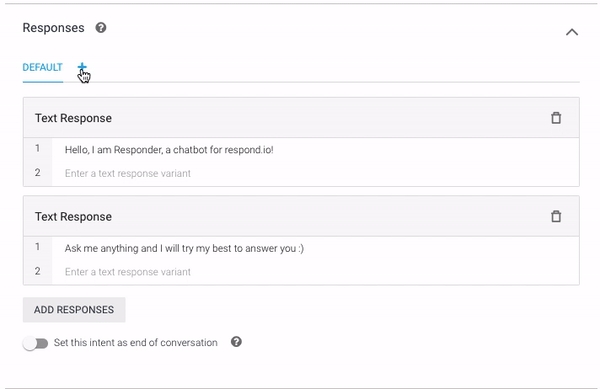Dialogflow: Response Templates
When creating an intent in the Dialogflow console, you'll be presented with several response templates. Default appears automatically for every new intent, but other templates are available for several messages apps.
Please use the guidelines below when working with Response Templates.
Using Response Templates
Dialogflow has created Response Templates for Facebook Messenger, Telegram, LINE, Viber and Slack.

When sending messages to a Channel supported by Dialogflow, use the Response Template for that app. When a Channel does not have a Response Template in Dialogflow, please refer to the table below.
In short, our platform will forward messages to each respective Channel based on priority below. If an answer is not available in the 1st priority Response Template, the 2nd Priority Response Template will send.
Channel
1st Priority
2nd Priority
Facebook Messenger
Default
Default
LINE
LINE
Default
SMS MessageBird
Default
-
SMS Twilio
Default
-
SMS Vonage
Default
-
Telegram
Telegram
Default
Default
-
Viber
Viber
Default
Website Chat
Default
Default
WhatsApp Business API (IS-Messenger WhatsApp BSP)
Default
WhatsApp Cloud API
Default
Default
WhatsApp 360dialog
Default
WhatsApp MessageBird
Default
-
WhatsApp Twilio
Default
-
WhatsApp Vonage
Default
-
As you can see from the priority table above, some channels support Facebook Response Templates because IS-Messenger transforms the Facebook Response Templates and sends them to the Contact in a suitable messaging format.
Last updated